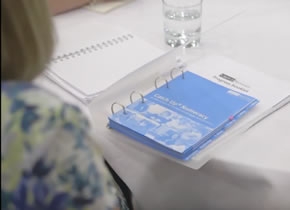
Request a full Catch Up® information brochure and details of our free information webinars
Find out more
Welcome to everyone, hopefully now in a more relaxed mood post SATs, Welsh National tests and GCSEs. Looking forward to the summer holidays, I hope. A shorter blog this time, but on a subject that we at Catch Up® realise is increasingly causing confusion and concern. Place value and, specifically, the correct terminology to use with learners; is it tens and units, or tens and ones?
Unfortunately, what appears to be causing the confusion is a geographical difference, particularly between England and Wales, and a resulting difference of opinion in terminology. Because there is no agreement, Catch Up® has kept its original paperwork rather than change it, leaving deliverers the option to change units to ones as needed – dependent upon the policy on where you are teaching. Let’s have a closer look at England and Wales and you will understand the problem; I will go alphabetically and begin with England.
If we look firstly at the document published in September 2013, ‘Mathematics programmes of study: key stages 1 and 2, National curriculum in England’, we find at year 2 “…. recognise the place value of each digit in a two-digit number (tens, ones).” Quite clear, no mention of units. In the updated statutory guidance, ‘National curriculum in England: mathematics programmes of study’ (the updated version from July 2014), we have “…. recognise the place value of each digit in a two-digit number (10s, 1s).” Unfortunately, there is no use of the word ‘ones’ but the intention is clear: Hundreds, Tens and Ones.
Looking at the place value charts currently offered as resources for use in England, the headings are the full words ‘Tens’ (or tens) and ‘Ones’ (or ones), or numerical 10s and 1s.
Now to Wales. The ‘Foundation Phase Framework (Revised 2015)’ is equally clear on its terminology, “… demonstrate an understanding of place value, e.g. one 10 and four units equal 14, up to at least 20.” In respect of older children, the only relevant reference in the ‘Programme of Study for Mathematics Key Stages 2–4’ is “…explain the value of a digit in numbers up to 1 000”, with no reference to ones or units. However, on the Welsh Government Hwb site, the terminology used on place value resources throughout is units, and this means that in Wales, HTU should be used.
So whether you use units or ones will depend totally on where you teach, and this is why Catch Up® decided not to change its Catch Up® Numeracy paperwork from units to ones. Instead, we leave you the option of tweaking any resources as necessary.
For colleagues in Wales, who use units and have the luxury of the abbreviated form, just a few tips:

Catch Up® is the working name of The Caxton Trust, a not-for-profit charity registered in England and Wales (1072425) and Scotland (SC047557) as well as a company limited by guarantee (03476510). Catch Up is a registered trademark.
The Catch Up® Web site use "cookies" to help you personalise your online experience. A cookie is a text file that is placed on your hard disk by a Web page server. Cookies cannot be used to run programs or deliver viruses to your computer. Cookies are uniquely assigned to you, and can only be read by a web server in the domain that issued the cookie to you.
Click on the different category headings below to find out more. You can change your default settings very easily. To turn cookies on, click the button to the right. To turn cookies off, click the buttons to the left. Please read our cookie policy to find out more.
Performance monitoring cookies: Google Analytics cookies (_ga,_gid) - these can last up to 2 years.
Strictly necessary cookies used by the site content management system: PHPSESSID (used to record your logged in session) and allow_cookies (used to record that the user has consented to cookies) - these are either temporary (session) cookies or expire after no more than 30 minutes and are used to provide functionality as you navigate around the site and allow you to access secure areas.